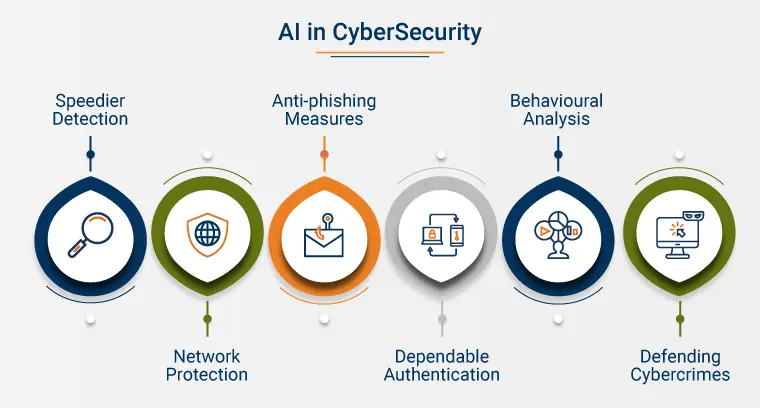As technology continues to evolve, so do the methods and complexities of cyber threats. In recent years, the integration of artificial intelligence (AI) has emerged as a crucial tool in combating these threats. Google CEO Sundar Pichai has provided insights into how AI can be instrumental in addressing cybersecurity challenges, offering a glimpse into the future of digital defence.
Enhanced Threat Detection and Prevention:
One of the primary ways AI can assist in tackling cyber threats is through enhanced threat detection and prevention mechanisms. Traditional cybersecurity measures often rely on rule-based systems, which may struggle to keep pace with the rapidly evolving tactics employed by cybercriminals. AI, however, can analyze vast amounts of data in real time, identifying patterns and anomalies that might indicate a potential threat. By leveraging machine learning algorithms, AI systems can adapt and learn from new data, continually refining their ability to detect and thwart cyber attacks.
Read also: Challenges and opportunities in Cybersecurity
Furthermore, AI-powered systems can automate responses to detected threats, enabling organizations to respond swiftly and effectively. Whether it’s blocking suspicious network traffic, quarantining infected devices, or patching vulnerabilities, AI can streamline the incident response process, reducing the window of opportunity for attackers to exploit weaknesses.
Behavioral Analysis and User Authentication:
Another area where AI can make significant contributions to cybersecurity is behavioural analysis and user authentication. Traditional methods of user authentication, such as passwords and security tokens, are increasingly vulnerable to sophisticated attack techniques like phishing and social engineering. AI technologies offer more robust solutions by analyzing user behaviour patterns and biometric data to verify identities.
By employing AI-driven authentication mechanisms, organizations can establish more secure access controls, mitigating the risk of unauthorized access to sensitive systems and data. These systems can adapt to evolving user behaviour, detecting anomalies that may indicate fraudulent activity and prompting additional verification steps when necessary. As a result, AI helps fortify the authentication process, making it more resilient against emerging threats.
Predictive Threat Intelligence and Proactive Defense:
In addition to bolstering reactive cybersecurity measures, AI can also empower organizations to adopt a proactive defence posture through predictive threat intelligence. By analyzing vast datasets from various sources, including historical attack data, threat intelligence feeds, and network telemetry, AI systems can identify emerging threats and vulnerabilities before they are exploited.
This predictive capability enables organizations to prioritize their security efforts, focusing resources on the most imminent risks. Whether it’s patching known vulnerabilities, updating security policies, or deploying additional safeguards, AI-driven threat intelligence provides invaluable insights that can help preempt cyber attacks before they occur.
Sundar Pichai’s insights underscore the transformative potential of AI in cybersecurity. By leveraging AI technologies, organisations can enhance their threat detection and prevention capabilities, bolster user authentication mechanisms, and adopt a proactive defence posture. As cyber threats continue to evolve in sophistication and scale, AI represents a powerful ally in the ongoing battle to secure digital assets and infrastructure. Embracing AI-driven solutions is not just a strategic imperative but a crucial step towards building a more resilient and secure cyber landscape.
















